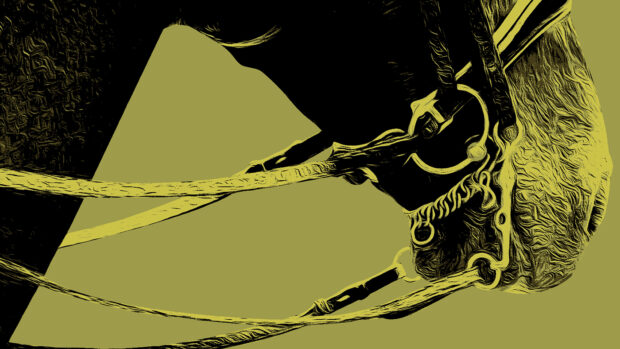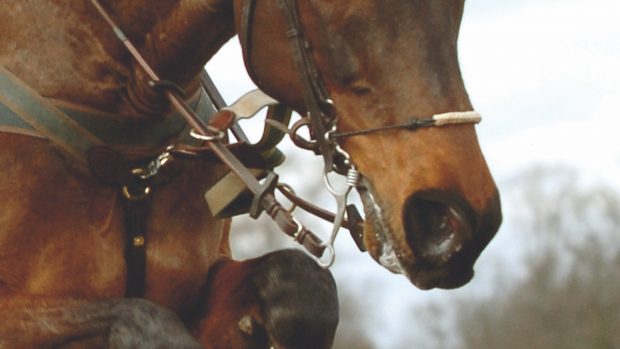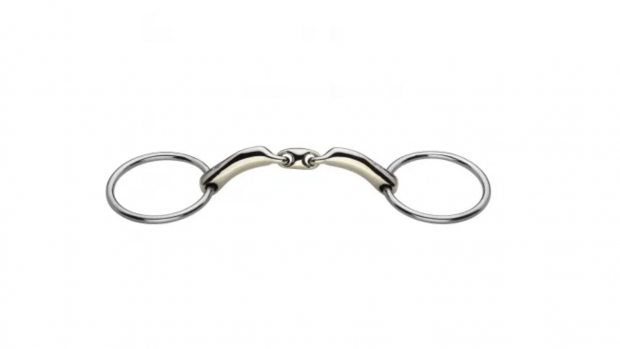WHEN Daisy Dick was spotted riding Springbok IV at Highclere in a Myler Combination bit with a Grakle noseband, H&H decided to find out why she uses this unusual choice of tack.
How do they work together?
TEN years ago Ron Myler, a rodeo competitor in America, designed a series of bits in America to help him communicate better with his horses. Today, Myler bits are one of the most popular on the market.
The Myler Combination bit utilises various pressure points which are acted on by the mouthpiece, curb strap and noseband. When contact is made through the reins, pressure is first placed on the horse’s nose, poll and jaw. Only when the rider exerts more rein contact will pressure be exerted on the mouthpiece.
The Grakle noseband, also known as the crossed noseband, puts pressure on the nose by preventing the jaw from crossing and the mouth from opening.
Pressure on a horse’s nose, jaw and poll helps him to relax and drop the poll, encouraging a rounder, softer outline.
What horses does it suit?
THIS combination seems suitable for horses who open their mouth or cross their jaw, but who are sensitive in the mouth.
Who uses the combination?
EVENT rider Daisy Dick uses it on her advanced horse Springbok IV.
“I’m not a gadget person, and I do the dressage and show jumping phases in a rubber snaffle on this horse,” she says.
“But cross-country he is tricky — he likes to raise his head high, cross his jaw and run through the bridle. I couldn’t use a stronger bit, as he is very light and sensitive in the mouth.
“The Grakle noseband prevents him from crossing his jaw and the added pressure on his poll and nose from both the bit and the noseband allows him to settle on to the contact without fussing. In this way, I can let him run cross-country, as he is easy to get back and he no longer fights me.
“I have wrapped the Myler Combination noseband in Vetwrap to make it even more comfortable, so there really is nothing for him to fight against,” explains Daisy.
“The more comfortable the horse is, the more he can concentrate on your commands.”
This Q&A was first published in Horse & Hound (20 December, ’07)


